III - Reliability #
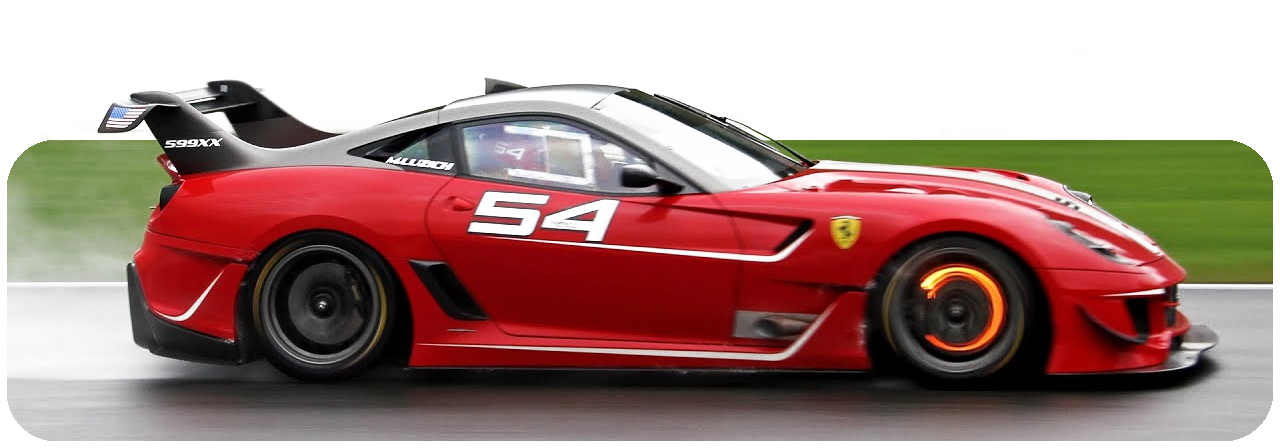
Brake rotors of the Ferrari 599XX glowing red hot. Photo courtesy of Gumbal.
Introductory Thoughts #
“To finish first you must first finish.”. In addition to improving the performance function of a racecar, airflow has to be budgeted to keep the car reliable for the duration of a race.
Powertrain Cooling #
All things equal, additional power is almost always a benefit to lap time. However, an engine that makes horsepower also produces heat in proportion to its power levels. This heat is a result of the fundamental inefficiencies present within a powertrain, such as friction within the bearings, piston rings, incomplete combustion of the fuel..etc. The thermodynamic efficiency of a powertrain is how much waste heat is produced for a given power output. The efficiency of the most advanced internal combustion powertrains is at best around 50%, so if the engine produces 1000 kilowatts (roughly 1300hp), it has to reject 500 kilowatts worth of heat.
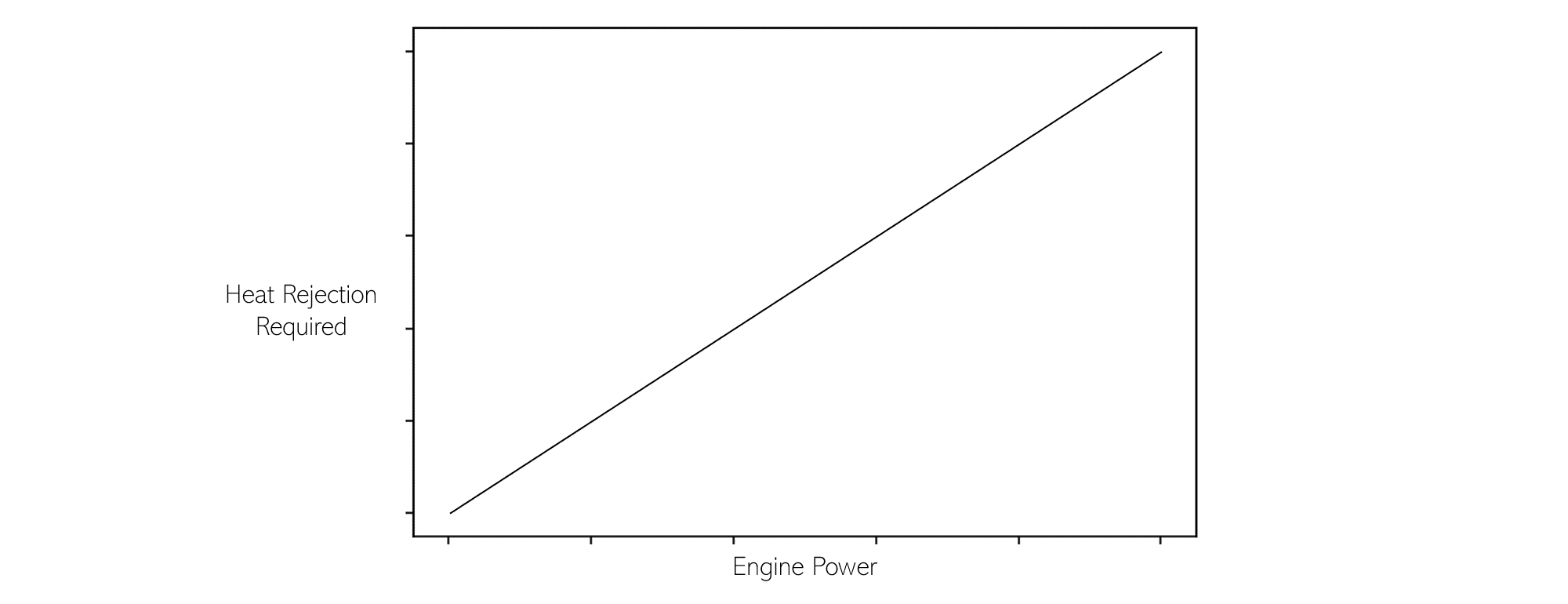
If the car is unable to adequately reject the heat, temperature builds within the powertrain until a critical component fails.
On modern road cars with complex control systems, in an overheating scenario, the onboard computer automatically cuts power to levels manageable by the vehicles cooling system. If the car isn’t outfitted with the control systems, the driver is be instructed to spend less time on the throttle, such that the powertrain produces less heat (this is called lift and coast). Both options are highly adverse for lap time.
So, to prevent temperature from ever being an issue, why not just maximize airflow through the cooling system? Unfortunately, airflow used for cooling is airflow not used to make downforce & sideforce. Ok, then why not maximize the surface area of the heat exchangers? This is also often an unacceptable option, as it carries mass, center of gravity, and packaging penalties.
Power isn’t everything
It’s actually possible to make a car slower by adding more power. If lap time on the circuit is more sensitive to grip than power, the penalty of the mass of the extra cooling equipment, and the concessions made to the aerodynamics, can overwhelm the added benefits of the power.
So, the burden falls on the aerodynamicists to devise ways to carry away this heat. Therefore, to maximize aero performance, engineers develop the car to sustain temperatures right on the brink of catastrophic failure.
The location of the inlet of the cooling system is an integral part of the overall aerodynamic design. Locating a cooling inlet directly in front of a sensitive piece of bodywork (like the rear wing) is generally bad for performance.
This has resulted in some creative solutions in the past.

| Point | Behavior |
|---|---|
| 1. | MP4-25 - Conventional sidepod design. |
| 2. | MP4-26 - U-shaped sidepods - Scalloped to feed more air flow to the rear wing. |
Equally as important is the location of the outlet of the cooling system. The air coming out of the outlet is low energy, so it should be released clear of any downstream bodywork.
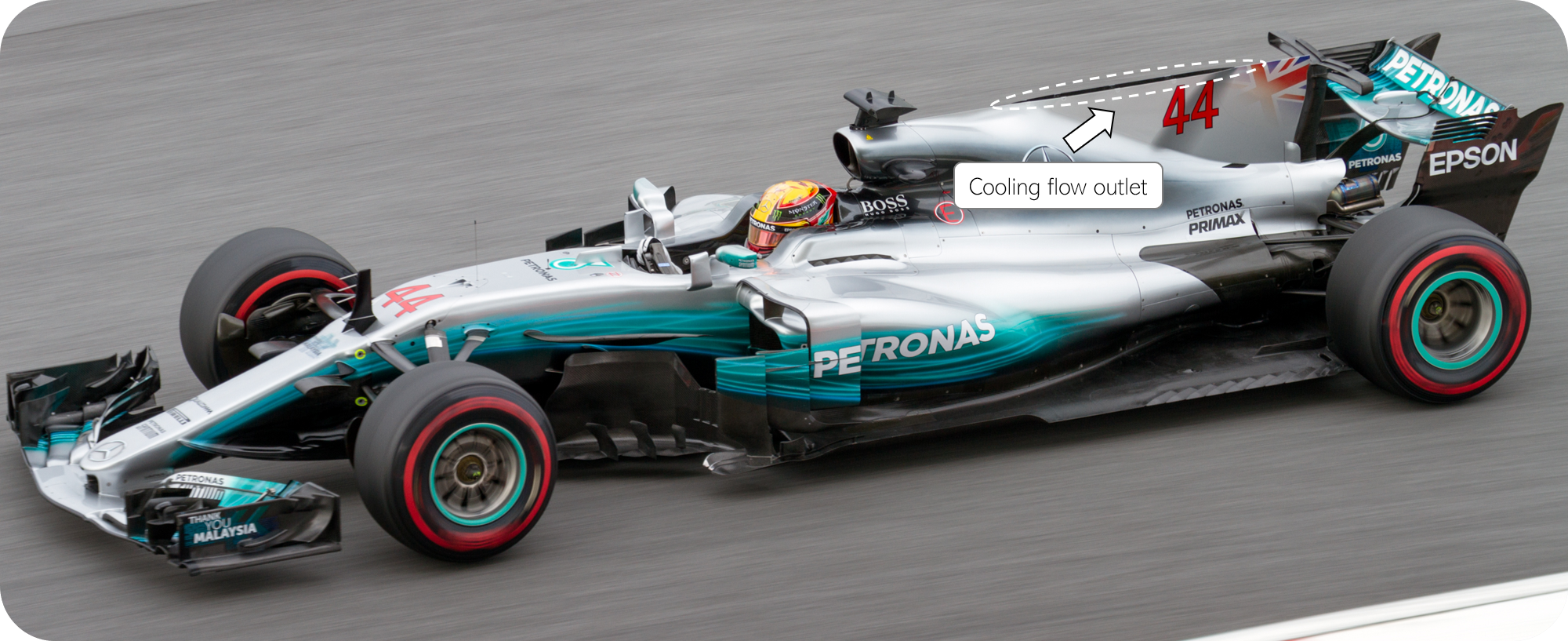
Mercedes AMG F1 W08
Tire Cooling #
A tire produces peak grip under a very specific set of conditions. Temperature is a primary parameter in tire grip production, and the ideal temperature range is often very narrow.
An open wheel racecar on a long straight often excessively cools the tires, putting them outside of their ideal temperature range. This causes the cars performance & balance to shift significantly between the corner going into the straight vs. the first corner after the straight. If the driver does not anticipates the balance change, it can lead to a loss in lap time at best, or a crash at worst.
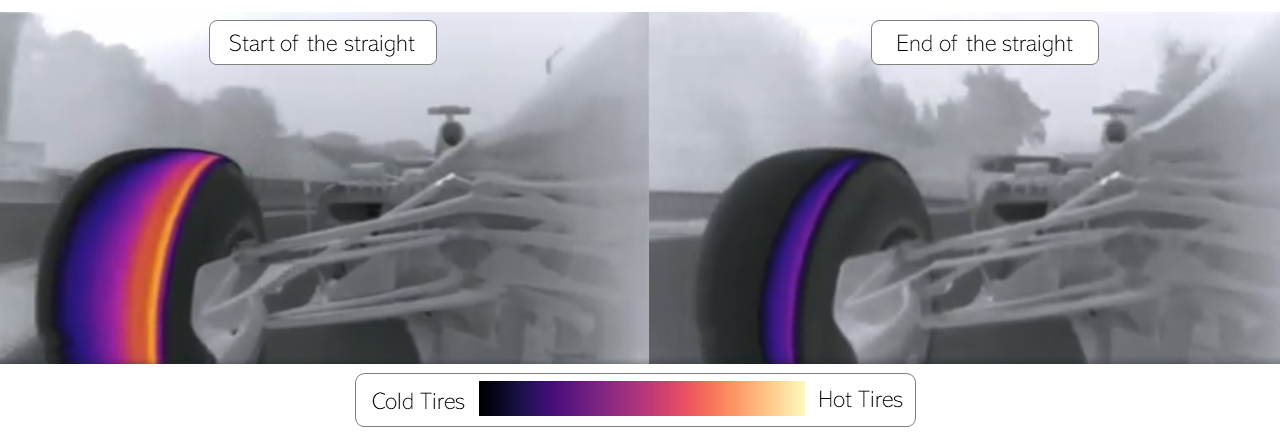
Tire temperature before & after the straightaway. Race footage courtesy of Formula One Group.
Sometimes, its a worthwhile trade-off to design the aerodynamics to make concessions in regards to downforce and drag if the tires can be kept at the proper operating temperature.
Brake Cooling #
The brake system of a car is designed to stop a car by converting the kinetic energy of the car into thermal energy stored within the brake rotor. This causes the brake rotors to get extremely hot (often over 1000°C, 1800°F), but the rotors typically bleed off some of this heat even without dedicated cooling.
However, if too many intense braking events are chained together, the rotors absorb so much heat that they fall outside of their ideal operating window, compromising braking performance. If this goes too far, eventually complete brake system failure occurs.
To alleviate against this, aerodynamicists budget just enough airflow to keep the brake system on the brink of failure, but without going over. Over-allocating flow to the brake cooling system needlessly compromises performance.
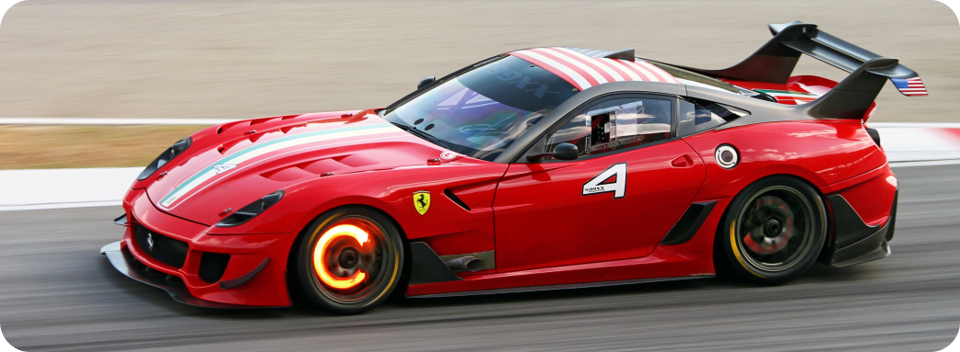
Carbon ceramic brakes on the Ferrari 599XX brake rotors glowing red hot.
Concluding Thoughts #
The early years of racing were largely a contest of driver bravery and skill. Now, motorsport has become a complex dance, and the number of interconnected variables to balance during the design, development, and running of a racecar are immense. The symbiosis of man, machine, and environment are what a motor race such a compelling spectacle.
For questions or clarifications on this, or any other article, reach out to Nav@WorksAero.com.